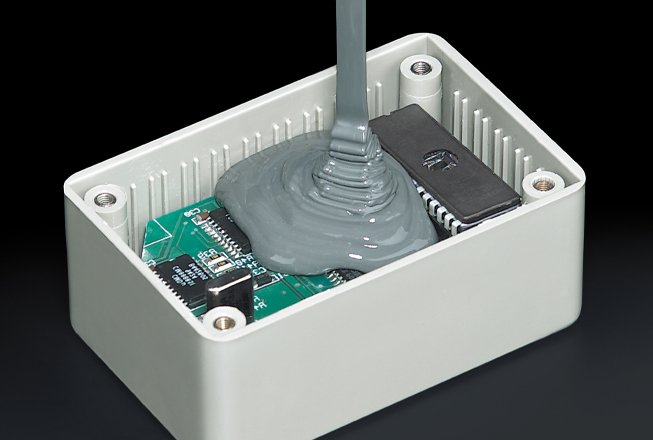An electrical potting compound is meant to protect and insulate electrical and electronic materials from environmental stresses and for varied applications. The finely designed electrical potting compound is assembled, with an aim to provide the consistent performance of materials; in attaining unrivaled strenuous electronic potting properties of application – such as excellent dielectric properties, thermal conductivity, electrical insulation resistance, adhesion; thermal shock resistance, hardness, mechanical strength, chemical resistance, and cure speed.
There are enterprises that dedicate themselves to the encapsulation and potting of compounds from connectors, sensors, power supplies, and relays; which deliver peak performance and easy processing.
Stated below are some advantages of electrical potting compounds which are formulated to resist the product against exposure to hostile conditions of the environment.
- Electrical insulation.
- Augmented mechanical strength.
- Heat dissipation.
- Vibration/shock resistance.
- Corrosion protection.
- Chemical protection.
- Environmental influences.
- Electrical insulation – Electronic potting materials furnish an extra insulation layer, covering up empty spaces in the assembly. This insulation does away with the over-voltage hazards. And aids prevention or containment of fire situations where the device fails.
- Thermal properties – It is usual for electrical components to emit heat while in use. Moreover, when there is a buildup, a shorter life or complete failure may be experienced. With potting done heat is drained by the material utilized within the assembly, so avoiding the looming hazards. Moreover, flexible potting materials can give protection against thermal damage and shock from internal shrinkage, when the components are exposed to extremely low temperatures.
- Resistance to chemical corrosion and moisture – By utilizing the best-suited potting materials, moisture and chemicals are sealed out, saving the electronic from failures and inefficient functioning. Potting is most useful in components potentially exposed to fuel, oils, and solvents. Potted devices will function effectively even if immersed in water with no risks.
- Long-lasting performance – Another visible advantage of potting for electronics is long-lasting performance; because the devices experience minimal damage from moisture, vibrations, and additional elements that usually affect the electronics’ lifespan. Increased durability is an additional advantage for all electronics as long as, the right electrical potting compounds are picked for the systems.
Potting Compounds Are the Most Preferred
Potting compounds provide solutions for numerous problems within the manufacturing and assembly of electronics products. The primary aim of using potting compounds over other types of sealants is to protect against moisture, prevent short circuits, provide additional chemical protection in sophisticated assemblies; to provide mechanical shock and vibration resistance in arduous environmental conditions. Last but not least it provides concealment of the intellectual property kept inside sophisticated circuitry.
To Summarize
The most conspicuous advantages of potting for electronics are resistance to hazardous environmental elements; the capacity to use devices in varied field conditions; as well as the protection of proprietary designs, most specifically in the financial industry. Electronic components demand protection from damaging environmental hazards and mechanical elements. Potting is one of the best methods to achieve the protection levels required, even for sensitive components.




